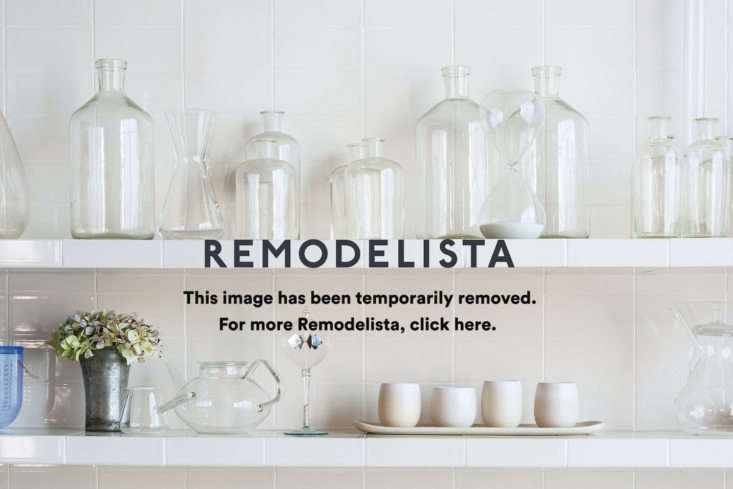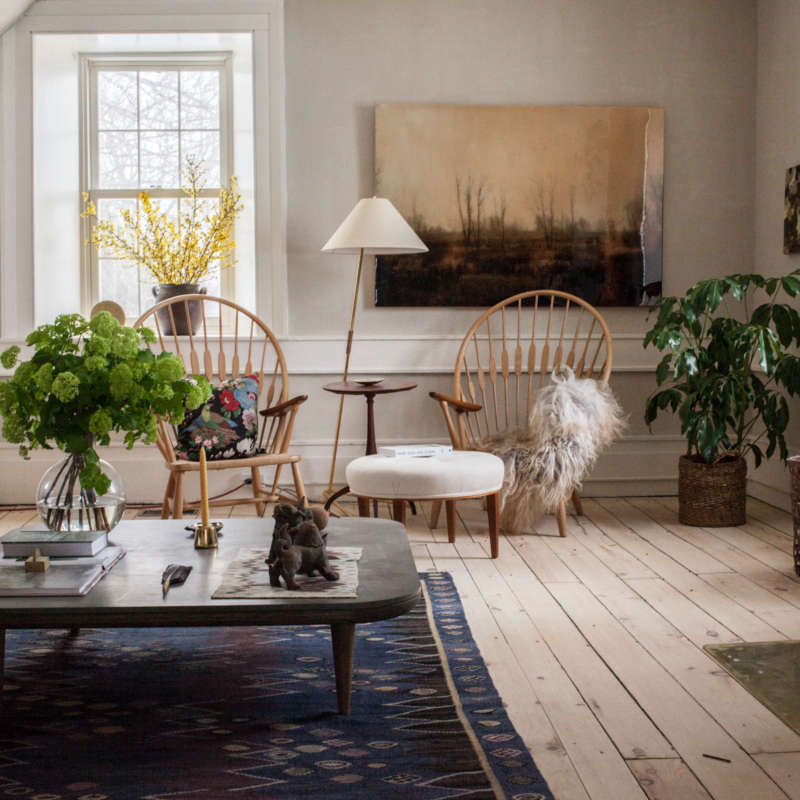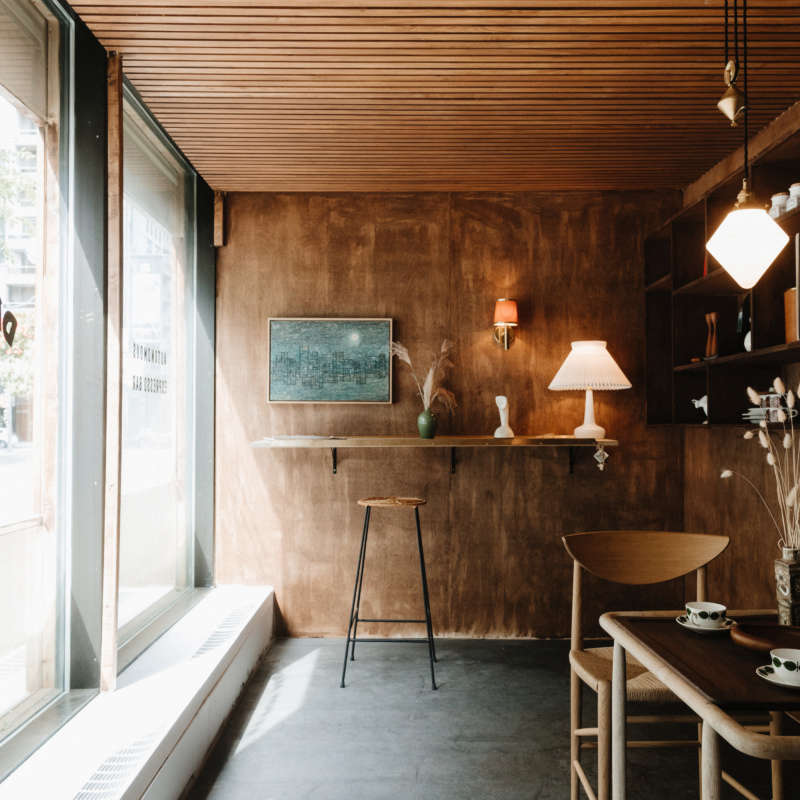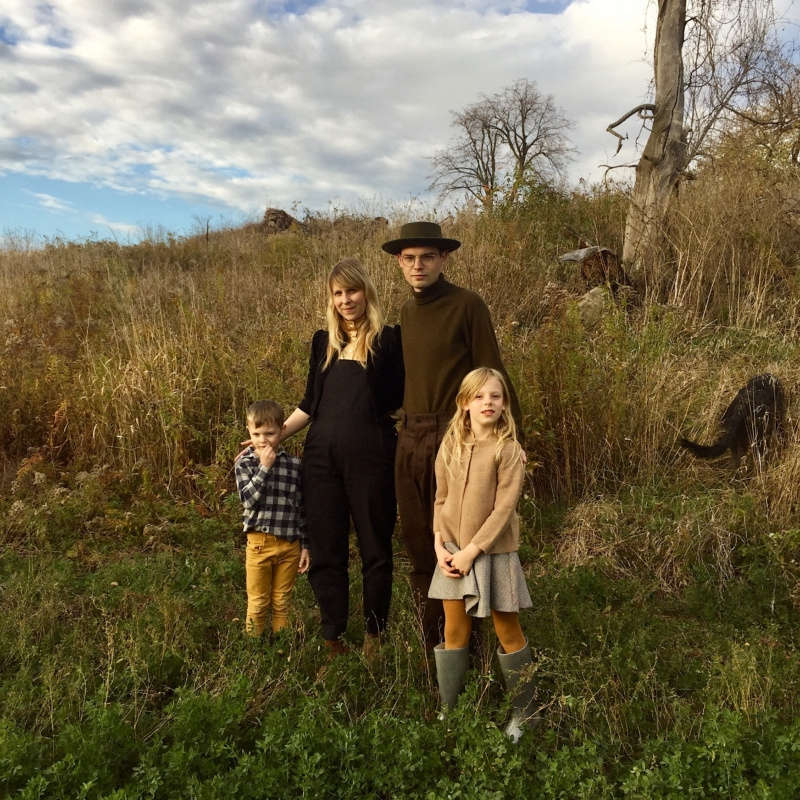As property values in metropolitan areas continue their prohibitive rise, urban families are always on the hunt for creative, affordable living solutions. Founding partners of Canadian architecture firm Studio Junction Christine Ho Ping Kong and Peter Tan designed their own home in Toronto to explore how they might use an ancient approach to architecture to transform urban infill into habitable plots, creating their own brand of urban alchemy.
Photography by Rob Fiocca.

Above: The greatest challenge to building a house on urban infill is the potential lack of natural daylight. To solve the problem of their site–situated in a mixed-use, industrial neighborhood–Kong and Tan took inspiration from age-old courtyard housing. Their design revolves around two courtyards, one at ground level and the other on the second floor. The light from the secondary courtyard draws daylight not only into the second floor but the office on the first floor as well.

Above: The courtyard on the ground level separates the house from the office studio, creating a communal space for both structures and functioning as the primary source of natural daylight.

Above: The living room, kitchen, and dining area all look onto the courtyard.

Above: A view from the house across the courtyard into the couple’s studio workshop.

Above: The office has two sources of natural daylight: light from the courtyard and light from a skylight.

Above: The couple run their architecture practice from the office, which is top-lit from the secondary courtyard at the rear of the house.

Above: Tan, a woodworker as well as architect, built the majority of the finely crafted house, including the stairs with built-in storage.

Above: The second-floor courtyard is a favorite play area.

Above: Window boxes thrive thanks to light from the secondary courtyard and moist air from the shower.

Above: Japanese shoji-style screens allow the light from the courtyard to come through the bathroom and into the hallway.

Above: A built-in bed and storage divide the children’s room from the master bedroom. A sliding partiton within the bed provides easy access in both directions. For more innovative children’s beds, see 10 Favorites: Creative Beds for Children.

Above: The original contractor warehouse that sat on the site. Photograph via Dwell.

Above: Studio Junction’s Courtyard House under construction. Photograph via Dwell.
Studio Junction worked with Juli Daoust and John Baker of Mjölk to design one of our all-time favorite kitchens: See A Scandinavian Kitchen with Hints of Japan and Steal This Look: The Mjölk Kitchen.
For another creative, affordable urban living solution–two families sharing one house–take a look at The Architect Is In: Elizabeth Roberts Adds Value in Brooklyn.
N.B.: This post is an update; the original story ran on May 30, 2013, as part of our The Kids Are All Right issue.
Frequently asked questions
What is Urban Alchemy in Toronto by Studio Junction?
Urban Alchemy in Toronto is a project created by Studio Junction, which is an architecture and design studio based in Toronto, Canada. The project involved the transformation of an old industrial building into a modern, multi-use space.
What was the purpose of the Urban Alchemy project?
The purpose of the Urban Alchemy project was to breathe new life into an old industrial building and create a space that would be useful for the local community. The project aimed to combine the industrial history of the building with modern design and technology.
What are the features of the Urban Alchemy building?
The Urban Alchemy building features a rooftop garden, a shared workspace, a retail space, and an event venue. The building also incorporates sustainable design features such as solar panels and rainwater harvesting systems.
Who is the design team behind Urban Alchemy?
Urban Alchemy was designed by Studio Junction, which is an architecture and design studio based in Toronto, Canada. The team at Studio Junction is led by Peter Tan and Christine Ho Ping Kong.
What was the inspiration behind the design of Urban Alchemy?
The design of Urban Alchemy was inspired by the history of the building itself, as well as the surrounding neighborhood. The team at Studio Junction wanted to create a space that would be both functional and beautiful, while also paying homage to the industrial past of the building.




Have a Question or Comment About This Post?
Join the conversation